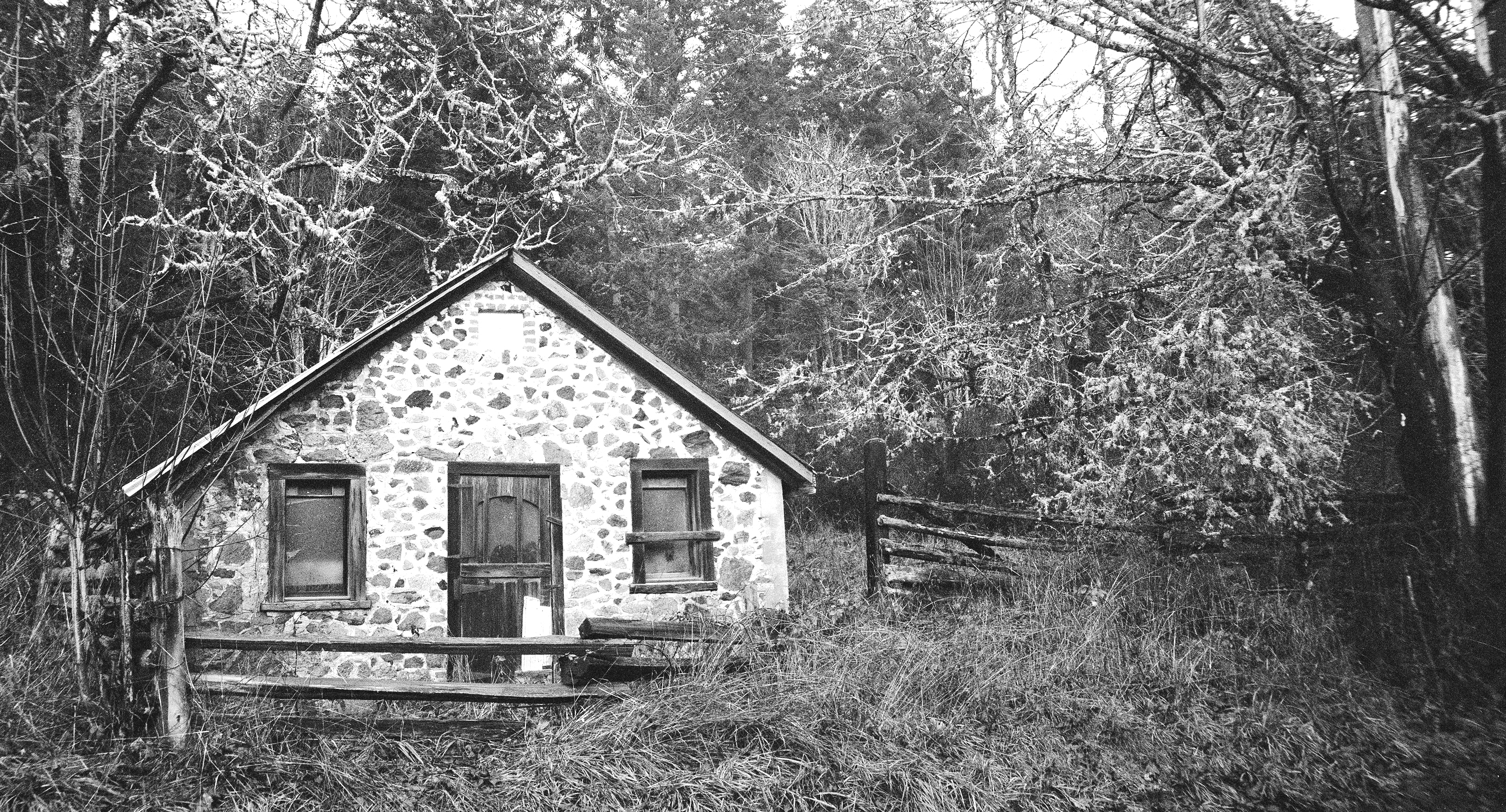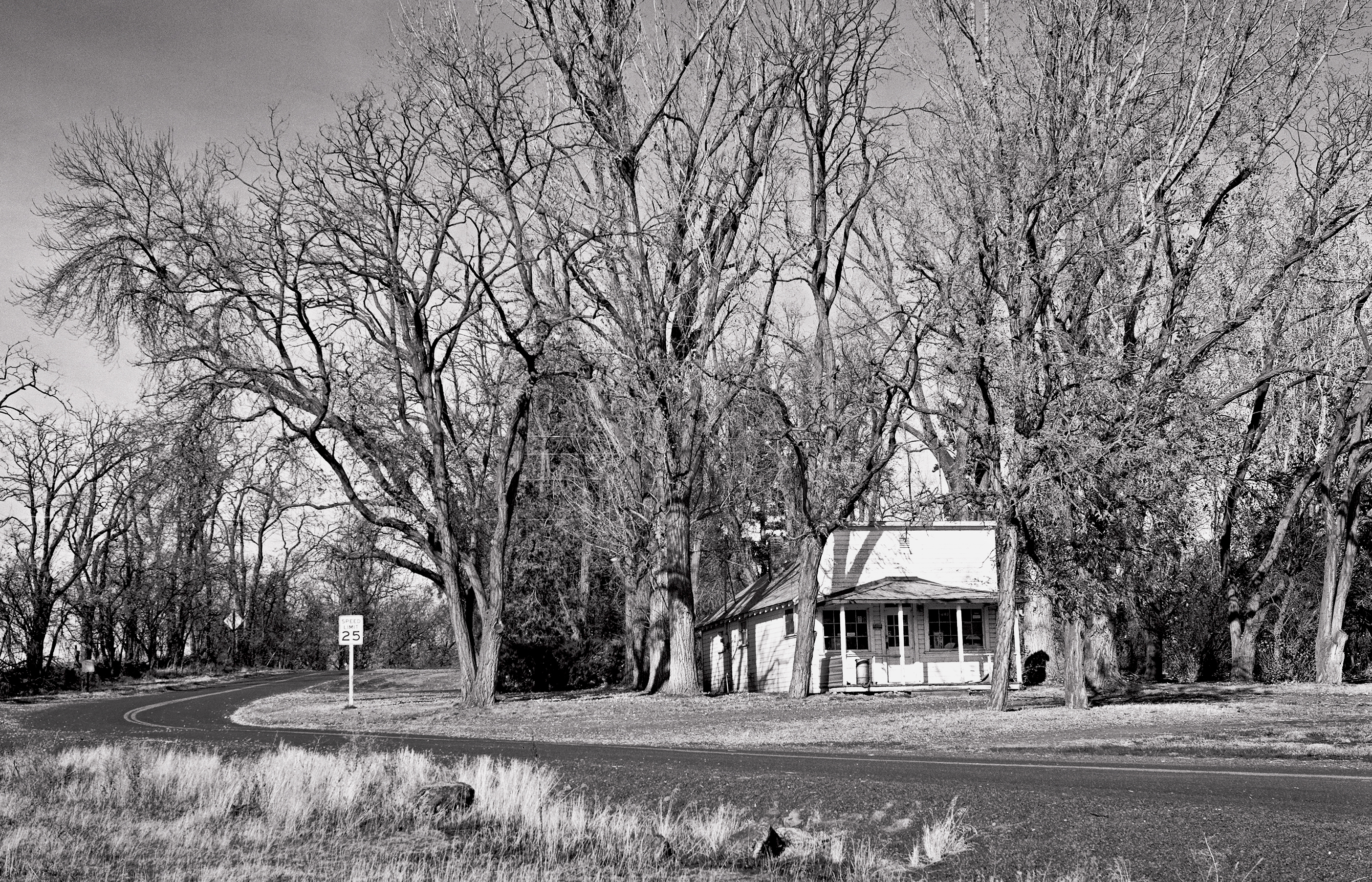After a day at a conference in Palm Springs, I escaped into the sun in search of desert images. A quick search of the internet reminded me of one of Palm Springs’ real treats, the oases of Desert Fan Palms (Washingtonia filifera) that flourish wherever the San Andeas fault forces deep groundwater to the surface, and I was soon speeding northward toward the Thousand Palms preserve. Leaving the town’s ritzy gated communities and straggling suburbs behind, I was soon traversing Highway 10 through the rocky desert of the northern Coachella Valley.
Just before I reached the oasis, I passed over a dry wash curving off toward the eroded brown crests of the distant Little San Bernardino Mountains. Intrigued by the interplay of the shafts of the late afternoon shadows and the curving lines of the wash and the trees, I stopped and went exploring. The late afternoon sun was low, and every rock and tree cast a spear of shadow across the line of the wash as it curved around a rocky outcrop. I took this photo on XP-2 with my No. 1 Kodak Junior at f/22, and once again the little Rapid Rectilinear lens captured a crisp image with excellent contrast and tonal range.
Later, I found the little road to Thousand Palms Canyon and, managing to elude the rattlesnakes and sidewinders, I savored the cool dusk between the majestic columns of palms, and climbed a crumbling slope to the top of a bluff where I found an old wooden cross sillouetted against the sunset.
References:
“Coachella Valley Preserve.” http://www.coachellavalleypreserve.org/.
“Coachella Valley Preserve Thousand palms oasis.” http://3dparks.wr.usgs.gov/jotr/html/coachella.htm.
“1000 Palms oasis.” http://www.coachellavalleypreserve.org/wilhelmhistory/histone.html.
“Thousand Palms Oasis on the San Andreas Fault.” http://geology.about.com/od/geology_ca/ig/safsouth/safsouthpalms.htm.







